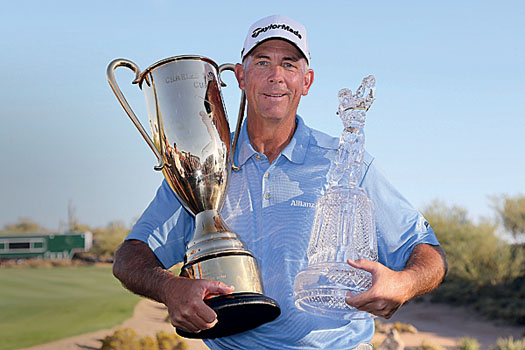
Schwab Investing Tip
Charles Schwab was a kid of 13 when he really got into golf. At first, it wasn’t so much the sport. He figured he could be a caddie – a great caddie – and make US$5 a day. But as he began playing he started reflecting on how much time he had to put into golf in order to get good at it, and remain good at it. He realized he just didn’t have enough time. So he embarked on hjs business career and found out that if he was going to retain golf for fun, and not for professional reasons, he really needed someone helping him on occasion. Mr. Schwab has found that in all his years of playing this wonderful sport there is never a short term fix. There are many occasions when you have a great round and then, just 24 hours later, you’ve lost something – whether its timing or technique – and suddenly you’re not able to play nearly so well. This is the disadvantage of golf: it’s so tough.
Investing is also tough. Golf and investing are the kinds of pursuits that, if you want to keep getting better and better, there is nothing like having the perspective of a professional to help you out, to help you achieve your best objective. In our experience, this is the wonderful parallel – the connection – between golf and investing, and both are fun.
Haney Golf Tip
Sand traps cause a lot of fear for the amateur golfer. When you find yourself bunkered, your goal should be very simple – get out of the trap and on to the green in one shot. You do that by using your sand wedge the proper way and that means having your clubface open when you hit the golf ball.
So when you address the ball, hold the sand wedge open and then take your grip. That way, the clubface will be open when you hit the golf ball. The bottom of the club will act as a rudder – it will keep the club from digging too deep into the sand. Just as importantly, put the ball forward in your stance – too many amateurs keep the ball too far back – so that it is opposite the inside of your left heel. Aim your body a little to the left of the target and try to feel like you’re swinging the club along the line of your body.
The key issue now – and something that not enough amateurs do – is to make sure you follow through. The sand of a bunker offers resistance but if you follow through you’ll carry that ball right on to the green. To be successful out of bunkers, open the face of your sand wedge and follow through each and every time.
For more on the connection between golf and investing, visit: www.schwab.com.hk/golf
About Charles Schwab
Charles Schwab Corporation’s Founder and Chairman, Mr. Charles Schwab, is an avid golfer himself. Over the years, he has found both golf and investing are tough games and that there’s no short term fixes. His firm, which is the Official Investment Firm of the PGA Tour and the Champions Tour, strives to guide investors along their investing journey, formulate plans, and provide resources to help investors be successful. When Schwab first opened its doors in 1971, the company knew that the key to success would be getting the fundamentals right. By focusing on the basics, the firm managed to take an early market lead, offering a combination of low prices with fast, efficient order executions, and soon became the United States’ largest discount broker. Today, the company is one of the U.S.’s leading financial services firms with around US$1.83 trillion in client assets. Charles Schwab, Hong Kong, Ltd. is a subsidiary of The Charles Schwab Corporation.
Click here to see the published article.











